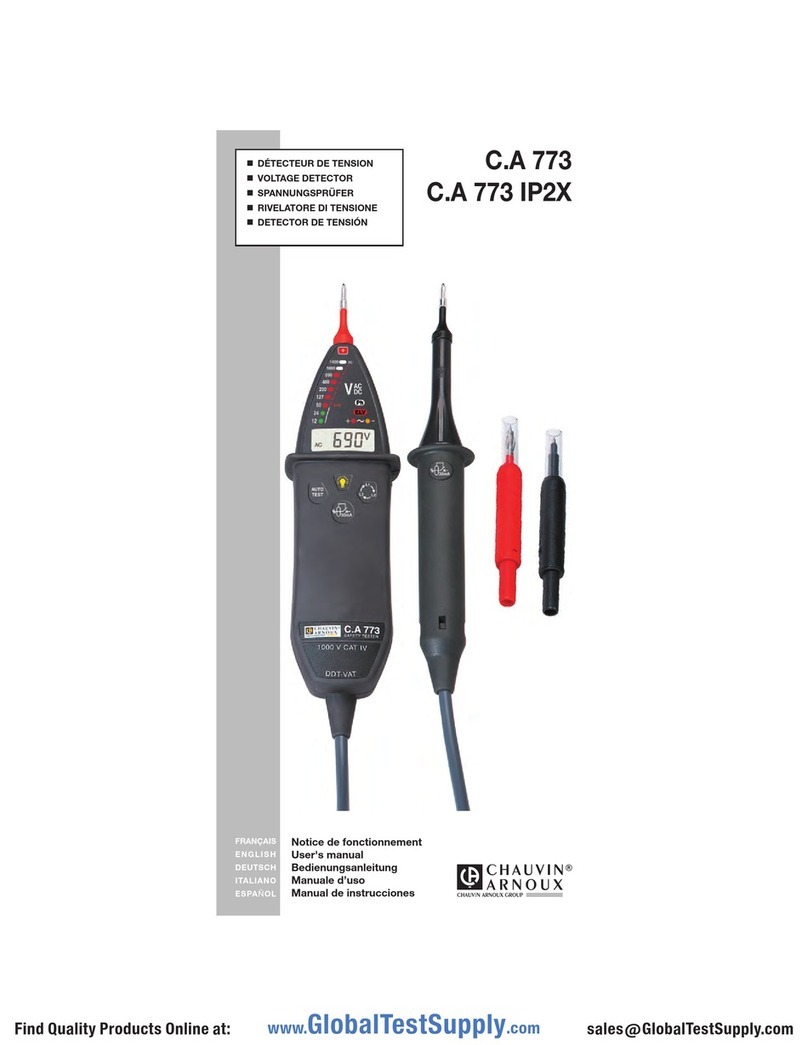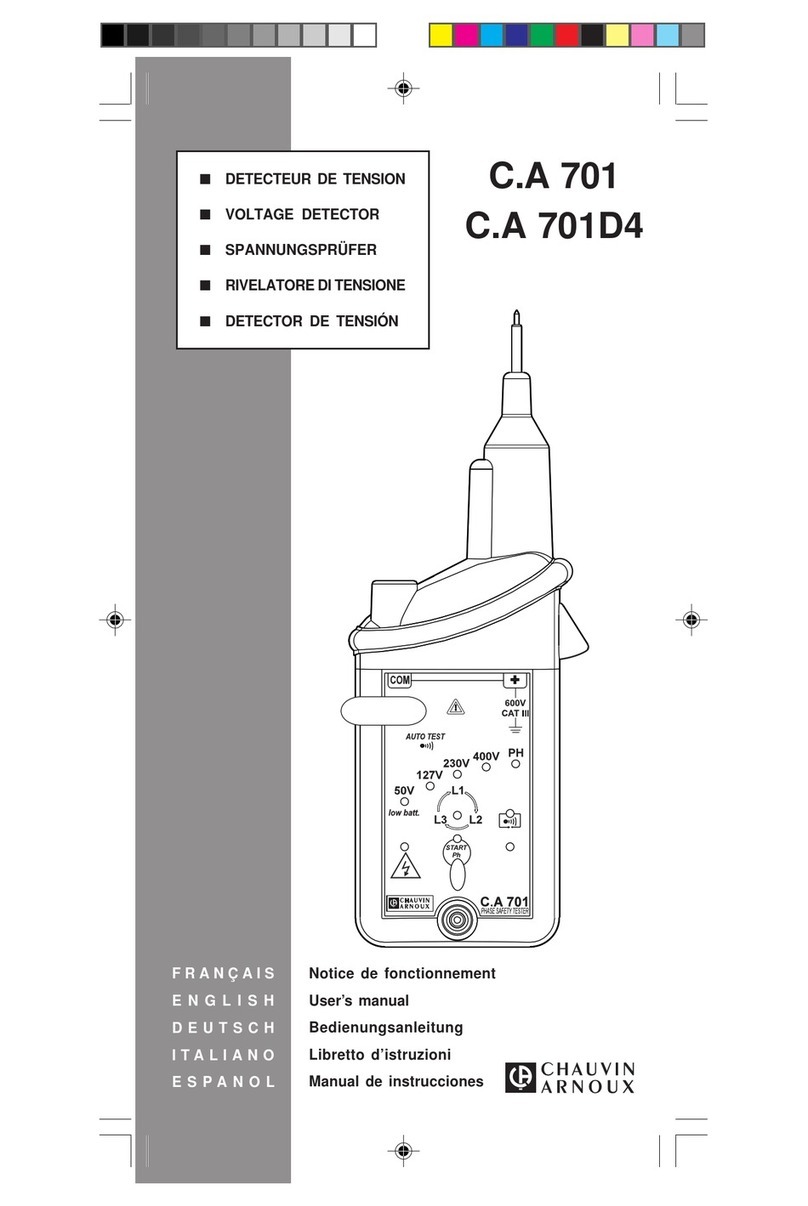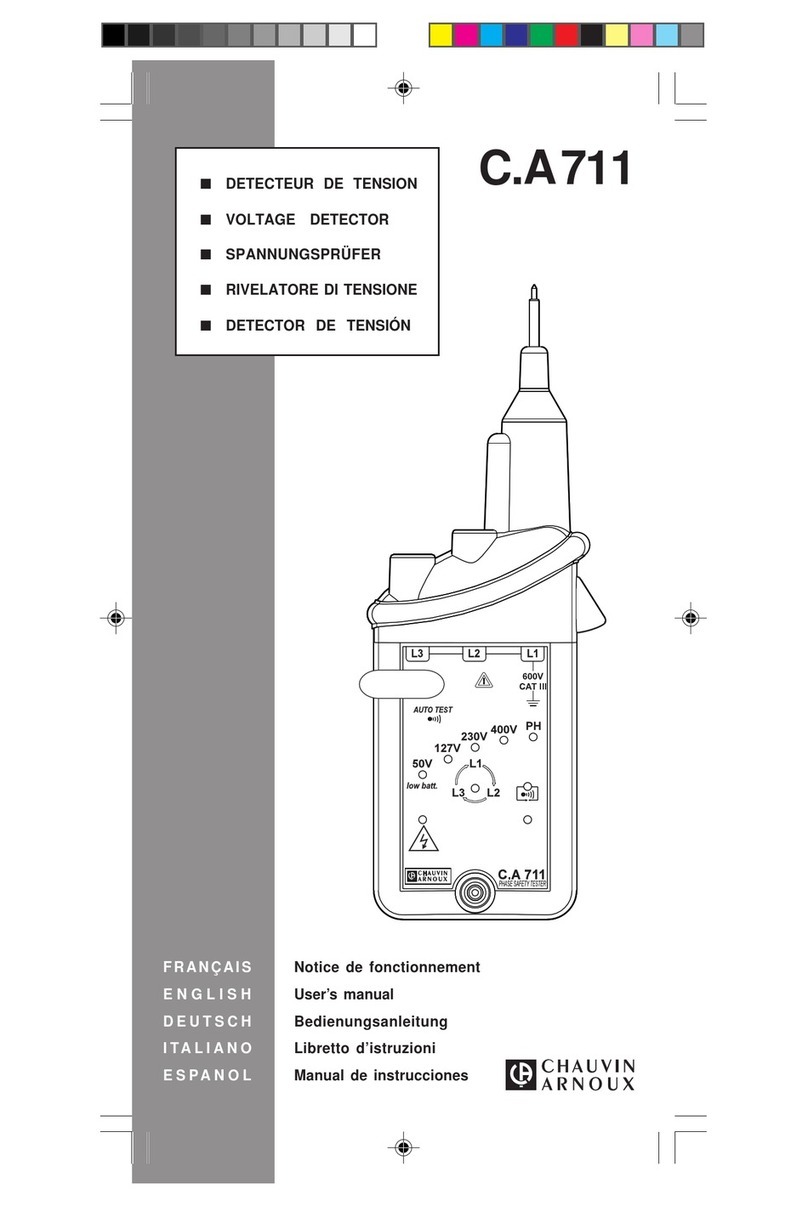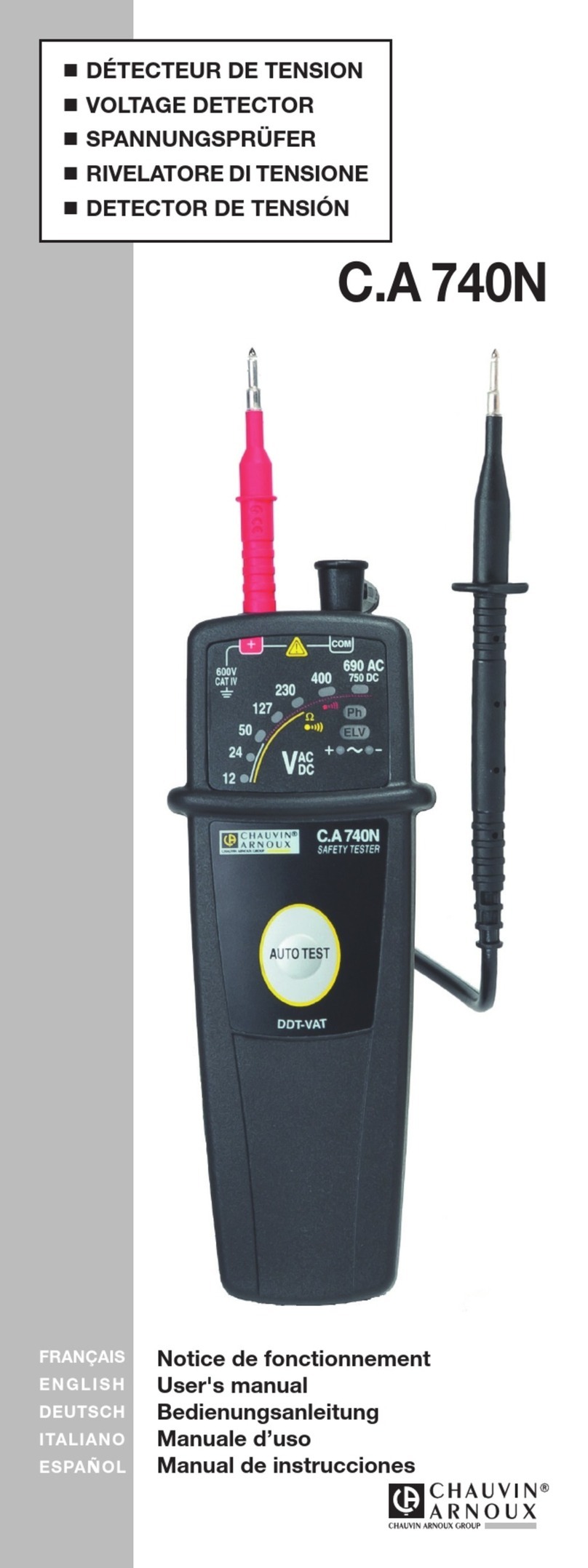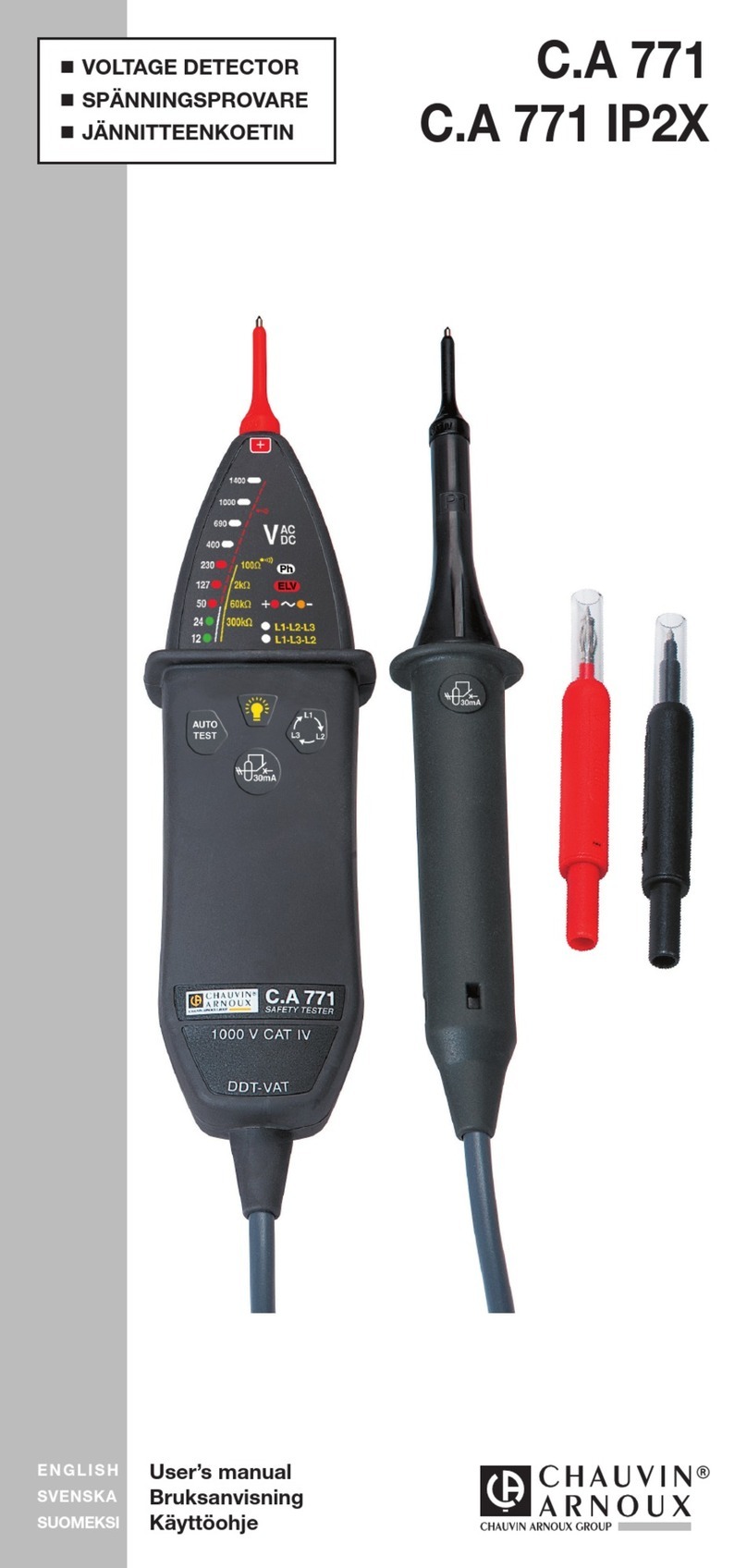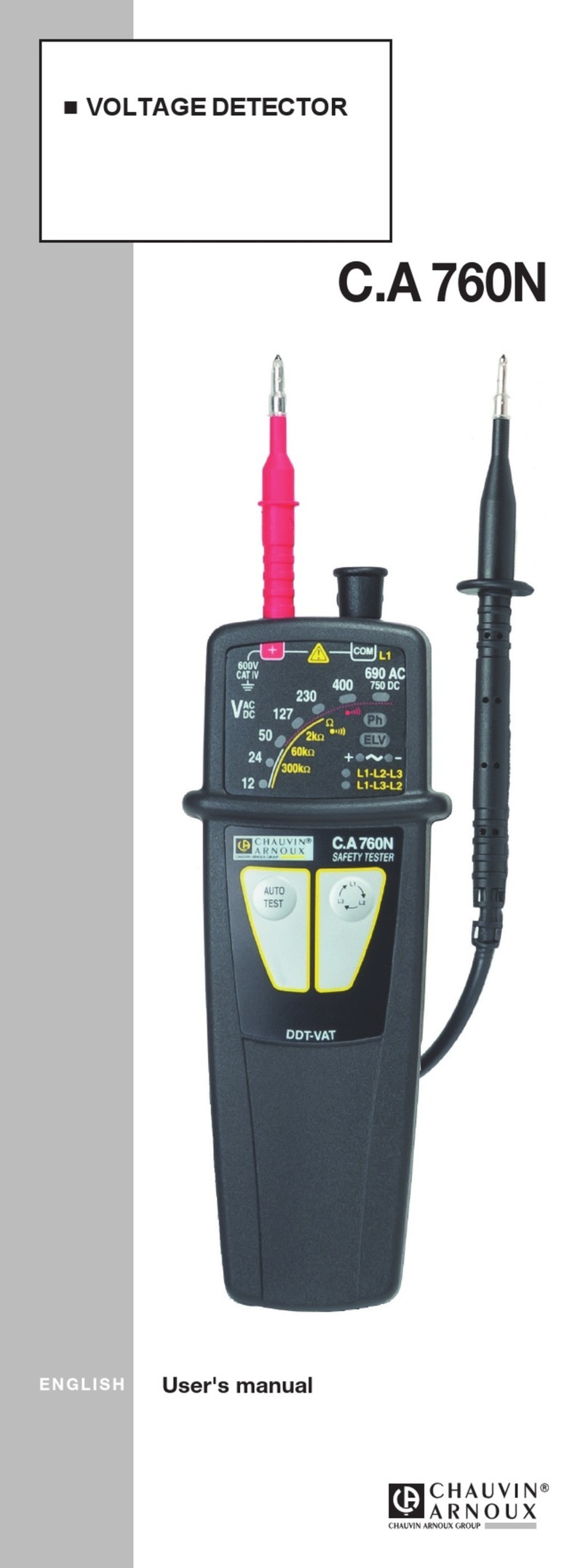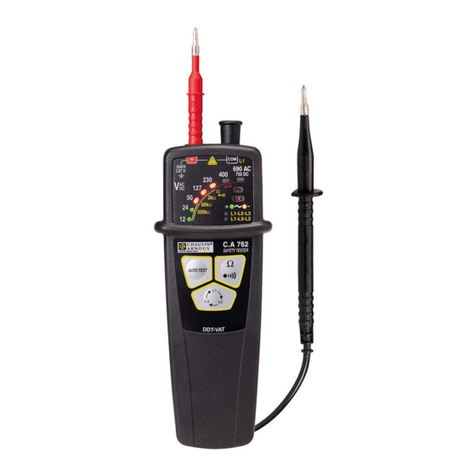
11
•the gas or fumes given off by combustion are not too diluted in the
air before reaching the CO sensor of the measuring instrument
theCOemissionmayactuallybeverylocalisedand youcanmeasure
strong concentrations at one measuring point and a weak
concentration only a few centimetres from your first measuring
point.
•The gas-burning appliance is the only detected source giving off
CO.
2.3 Precautions for use of the sensor
2.3.1. Sensor concept
Thesensor hasa lifetime of 2 to 3 yearsdepending onhow often the
measuring instrument is used
Thesensoris equipped withanon-replaceable filter tocombattraces
of SO2, NO2 and most hydrocarbons.
However, if exposed to high concentrations of toxic chemicals or
dust, the filter may be damaged and prevent gas reaching the sensor
.
2.3.2. Utilisation of the sensor
1. Donotdirectlymeasureengine exhaust fumes orgaseshighly
contaminated with CO. A very high level of CO may actually
destroy the sensor.
2. Do not take measurements directly in the air flow of a smoke
conduit or ventilation flap.
3. Theairmeasured must bestable, at atemperature between 0
and 40°C with 15 to 90% humidity. Changes in temperature
and humidity may cause measuring instability.
To obtain more reliable results, take samples of air using a
suction pump and allow the gas removed to cool to room
temperature.
4. If confronted with rapid temperature changes, for example
from a refrigerated zone to a room-temperature zone during
themeasurementcampaign,theoperatormustallowthetester
to stabilise at room temperature for at least 2 minutes before
taking the measurements.
2.4 Optional gas extractor
In cases where the measuring point is difficult to reach or still too hot, use
the gas suction pump (optional).
For extremely high concentrations of CO, pump gently and stop if the
measurementgets close to 2,000 ppm;above thislevel you maydamage
the sensor.
In a normal case, the display reading starts to lift above zero after
activating the pump a few times. The measurement can be read as soon
as it stabilises after pumping around thirty times.
3.DESCRIPTIONOFTHEINSTRUMENT
①Measuring head containing the CO sensor
②Backlit liquid crystal digital display
- main display: numerical value of the level of CO expressed in
PPM with 3 ½digits or OL error code.
